Shirley Jackson’s The Haunting of Hill House
 Different people have different explanations for why horror fiction exists, and why it’s worthwhile. It’s always seemed to me that, whatever else it does, good horror writing expresses some kind of fear or terror that is both deep and common. Insofar as the fear’s deep, the horror story touches a profound well of emotion, as good fiction usually does; insofar as it’s common the story links readers together and reminds us that we share the same dreads. So at its best, horror fiction is empathic and profound.
Different people have different explanations for why horror fiction exists, and why it’s worthwhile. It’s always seemed to me that, whatever else it does, good horror writing expresses some kind of fear or terror that is both deep and common. Insofar as the fear’s deep, the horror story touches a profound well of emotion, as good fiction usually does; insofar as it’s common the story links readers together and reminds us that we share the same dreads. So at its best, horror fiction is empathic and profound.
And something else: it can articulate fear in a new way. Mary Shelley tapped into new fears of her time about scientists and Faustian Romantics. H.P. Lovecraft wrote stories articulating fears arising from a new scientific worldview, in which humanity was not only displaced from the centre of creation, but proved to be an accident or irrelevance in a fundamentally inhuman universe. At least as far back as the first wave of Gothic novelists in the late eighteenth century, writers were finding an imaginative form for writing about the fears of women (in particular) in an extremely patriarchal society; the usual plot involved an innocent female protagonist, a sinister edifice or castle, and a demonic male figure, lord of the estate, who gets the heroine in his clutches. It’s been said that the typical Gothic is a love story between a woman and a house.
Gothics are still being written, though not quite in the eighteenth century mold. The best of them have changed, incorporating new fears, reflecting new times. So one of the greatest of twentieth century horror stories, Shirley Jackson’s The Haunting of Hill House, is both a bravura reprise of the Gothic tradition and also a radical updating of the form. It finds new dimensions to the fears it raises and summons. Gender has a relevance to those fears, but not I think in the way of the old Gothics. There is a dreadful universality to the disquiet Jackson evokes. The book revises its tradition, but also mixes old fears with new. So let’s take a look at it, and see how it all works, and what we have to be scared of.
 (Normally, I don’t like to give away crucial plot points in these discussions. But in this case, that’s going to be inevitable. So if you haven’t read the book and want to be surprised, you’re better off to stop here. Enough to say that the book is excellent, and should be easy to find.)
(Normally, I don’t like to give away crucial plot points in these discussions. But in this case, that’s going to be inevitable. So if you haven’t read the book and want to be surprised, you’re better off to stop here. Enough to say that the book is excellent, and should be easy to find.)
The set-up is simple enough. A psychic investigator decides to investigate a certain New England country house widely believed to be haunted. Dr. John Montague is a would-be ghost-breaker (a ‘nightmare man,’ as we like to say around these parts), explicitly compared to “intrepid nineteenth-century ghost hunters,” but who hasn’t the financial resources of his predecessors; he rents the mansion for the summer, but needs to locate unpaid assistants to live with him in the house. He sends letters to a number of people with experience in the supernatural. Two end up responding: Theodora, an artist and free spirit who once scored highly on a card-reading test for telepathy, and Eleanor Vance, a friendless thirty-two-year-old woman who spent her adult life caring for her recently-dead mother and who was the centre of unexplained poltergeist phenomena as a girl. Along with Luke Sanderson, a representative of the family who owns the place, they come to Hill House.
It is Eleanor Vance we follow through the book, starting with her pseudo-theft of a car from her sister in order to get to the house. Jackson’s artistry here is remarkable: the introductory sections briefly and memorably describe Hill House and the main characters in good atmospheric horror-story style. Then we move to Eleanor having an argument with her sister and brother-in-law about the use of their shared car, which Eleanor ultimately takes without permission. The style for that scene is terse, tight, and highly realistic; the quarrel’s fundamentally domestic, a sharp contrast to the opening. Eleanor takes the car, and we follow her drive as she imagines lives for herself, imagines the histories of the places she passes, and finds a kind of previously-unimagined freedom. So we’ve moved from horror story to naturalism, an intense character study that situates us inside Eleanor’s head. This does two things: it shows us who she is, and makes us empathise with her. We learn how constrained her life has been up to this point, and how fragile she is mentally. And we can’t help but relate to her slowly-emerging joy in freedom.
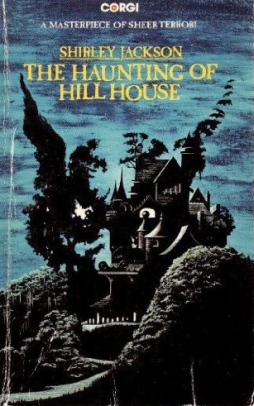 The rest of the book takes place at Hill House, but it also takes place inside Eleanor’s head. She gets to the house, meets Theodora, who arrives next, and the two men; they all explore Hill House and the grounds, Montague describes its history, and then strange things start to happen. But we’re never quite clear on the reality of those strange things, the unearthly knockings and writings on walls and manifestations of blood. Are they real, or in Eleanor’s imagination?
The rest of the book takes place at Hill House, but it also takes place inside Eleanor’s head. She gets to the house, meets Theodora, who arrives next, and the two men; they all explore Hill House and the grounds, Montague describes its history, and then strange things start to happen. But we’re never quite clear on the reality of those strange things, the unearthly knockings and writings on walls and manifestations of blood. Are they real, or in Eleanor’s imagination?
There is an ambiguity to the hauntings of Hill House. Jackson herself viewed it as definitely supernatural, and claimed to believe in ghosts. But at the same time, we’re following Eleanor through increasing stress, watching her struggle against psychic pressures, watching her disintegrate mentally. Something pushes her. Is the pressure from the inside or the outside? Does it matter?
Jackson manipulates the atmosphere of the place and the story with great skill, and part of that skill is displayed through the disorientation of the reader (just as the strange angles of Hill House disorient everyone who passes inside it). What’s real? What’s supernatural and what’s merely imagined? There seems to be at least one instance near the end of the book, an experiment with automatic writing, that insists on a ghostly manifestation. But by that point we, just as much as Eleanor, are confused, on edge, and the hint of the eerie is enough. What frightens us is not the thing itself, not the sign of ghosts; it’s what happens to Eleanor as a result, and what goes on inside her.
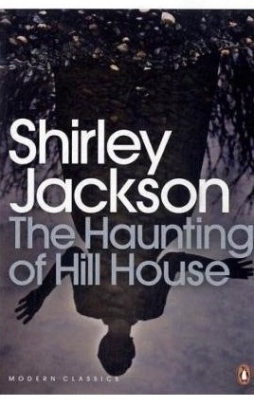 Jackson never makes it explicit what the malevolent force is which inhabits the house. It’s never directly named. Some readers have preferred to think the ghosts are all hallucinations of Eleanor’s, while others have thought the malevolence was simply a kind of emergent property of the place and the building. I think this piece by Joe Nazare at the Internet Review of Science Fiction does a great job of unriddling some of the textual clues to work out the nature of the ghosts in Hill House. Nazare looks at the family drama behind the origin of the house, built eighty years in the past by patriarch Henry Crain — since the book was published in 1959, that puts it at about 1880 — and works out the identity of the malevolent spirit haunting the place.
Jackson never makes it explicit what the malevolent force is which inhabits the house. It’s never directly named. Some readers have preferred to think the ghosts are all hallucinations of Eleanor’s, while others have thought the malevolence was simply a kind of emergent property of the place and the building. I think this piece by Joe Nazare at the Internet Review of Science Fiction does a great job of unriddling some of the textual clues to work out the nature of the ghosts in Hill House. Nazare looks at the family drama behind the origin of the house, built eighty years in the past by patriarch Henry Crain — since the book was published in 1959, that puts it at about 1880 — and works out the identity of the malevolent spirit haunting the place.
As Nazare sees it, the ghost is one of Crain’s two daughters, and the evil of the place derives from a quarrel between the sisters. Nazare’s identification of the spirit makes perfect sense, establishing a parallel between the supernatural and mundane elements: Eleanor’s story begins with a quarrel with her sister, and much of the drama between the characters arises from her relationship with Theodora. The Crain woman was tended in her last days by a companion, as Eleanor tended to her mother. The companion is said to have let Crain die while she “dallied in the garden with some village lout,” after which she claimed the house for her own over the younger Crain sister’s objections; just as Eleanor has an episode of dalliance with Luke, just as she claimed her car over her sister’s objections.
At the same time, the identification of the Crain daughter as the force haunting Hill House explains some of the structure of the book. Montague gives us the Crain story at length. We see, with Eleanor, odd remnants of the Crains: a statue, a primer put together for the Crain girls — and these things are described in great detail. The amount of attention these weird household items are given insists on their importance. If we understand that the ghost is one of the dead Crains, then that importance is clear. These are things that reveal the ghost to us, that show us who she is and help establish parallels with Eleanor. The book, understood properly, becomes tighter, less wasteful.
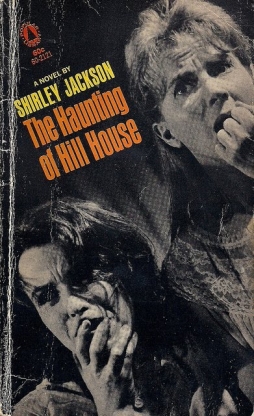 More precisely, the use of the eerie props to build an atmosphere becomes more tightly integrated into the overall story. As I’ve said, Jackson’s development of atmosphere is magisterial. It’s a fundamental necessity not simply because the horrific atmosphere is what fascinates readers, but because it’s something that works on the characters — specifically Eleanor. Jackson uses here a restrained style far away from lush Victorian ghost-story writing or Lovecraft’s use of frantic negations (the indescribable, the unearthly, and so on). Jackson writes a restrained, spare, realist novel that happens to be describing psychic phenomena. The description of the strange angles of the house is so matter-of-fact, it’s chilling; again, disorienting in proportion to what it describes. For overt supernatural manifestations, Jackson often refuses to provide any narrative description at all, letting the dialogue of the characters stand as they try to convince themselves of what they’re seeing, as they argue with each other about the reality of things and the meaning of what they’re confronted with.
More precisely, the use of the eerie props to build an atmosphere becomes more tightly integrated into the overall story. As I’ve said, Jackson’s development of atmosphere is magisterial. It’s a fundamental necessity not simply because the horrific atmosphere is what fascinates readers, but because it’s something that works on the characters — specifically Eleanor. Jackson uses here a restrained style far away from lush Victorian ghost-story writing or Lovecraft’s use of frantic negations (the indescribable, the unearthly, and so on). Jackson writes a restrained, spare, realist novel that happens to be describing psychic phenomena. The description of the strange angles of the house is so matter-of-fact, it’s chilling; again, disorienting in proportion to what it describes. For overt supernatural manifestations, Jackson often refuses to provide any narrative description at all, letting the dialogue of the characters stand as they try to convince themselves of what they’re seeing, as they argue with each other about the reality of things and the meaning of what they’re confronted with.
Compare the first paragraph of the book with an interior passage. The introduction first:
No live organism can continue for long to exist sanely under conditions of absolute reality; even larks and katydids are supposed, by some, to dream. Hill House, not sane, stood by itself against its hills, holding darkness; it had stood so for eighty years and might stand for eighty more. With, walls continued upright, bricks met neatly, floors were firm, and doors were sensibly shut; silence lay steadily against the wood and stone of Hill House, and whatever walked there, walked alone.
This paragraph returns at the very end of the story, emphasising the persistence of Hill House. The focus on insanity sets up the development of the rest of the story. The emphasis on the physicality of the place establishes the nature of the setting. The discussion of its absolute reality and (implicitly) dreamlessness, its lack of imagination, the way it bounds hills and darkness, the way walls and floors bind silence. It’s a place of imprisonment; of repression.
But this sort of thing is relatively unusual in the book. Mostly the effects build subtly, through dialogue and close psychological description in clear, direct language. It’s difficult to provide a quotation showing this, as the effect builds slowly and through a series of contrasts — an uncanny event, Eleanor’s reaction, the reactions of others, an awareness of the disjunction between Eleanor’s perceptions and the perceptions of others or else of the growing tension between Eleanor and the other characters. That said, here’s an example from about two thirds of the way through the book, after the characters find a mysterious message to Eleanor chalked on a wall. It begins with Montague suggesting that fear is “the relinquishment of logic, the willing relinquishing of reasonable patterns” that one yields to or fights, but which cannot be met halfway. Eleanor tries to articulate what it’s like being afraid, how she can see “the sensible, beautiful not-afraid side of the world,” but stops existing relative to it. Then:
“I think we are only afraid of ourselves,” the doctor said slowly.
“No,” Luke said. “Of seeing ourselves clearly and without disguise.”
“Of knowing what we really want,” Theodora said. She pressed her cheek against Eleanor’s hand and Eleanor, hating the touch of her, took her hand away quickly.
“I am always afraid of being alone,” Eleanor said, and wondered, Am I talking like this? Am I saying something I will regret bitterly tomorrow? Am I making more guilt for myself? “Those letters spelled out my name, and none of you knows what that feels like — it’s so familiar.” And she gestured to them, almost in appeal. “Try to see,” she said. “It’s my own dear name, and it belongs to me, and something is using it and writing it and calling me with it and my own name …” She stopped and said, looking from one of them to another, even down onto Theodora’s face looking up at her, “Look. There’s only one of me, and it’s all I’ve got. I hate seeing myself dissolve and slip and separate so that I’m living in one half, my mind, and I see the other half of me helpless and frantic and driven and I can’t stop it, but I know I’m not really going to be hurt and yet time is so long and even a second goes on and on and I could stand any of it if I could only surrender —”
“Surrender?” said the doctor sharply, and Eleanor stared.
Eleanor backs away from her statement, and claims not to remember what she said. The others seem to accept this, chuckling and attributing it to vanity — “‘Have to be in the limelight,’ Theodora said, and they smiled fondly, all looking at Eleanor.”
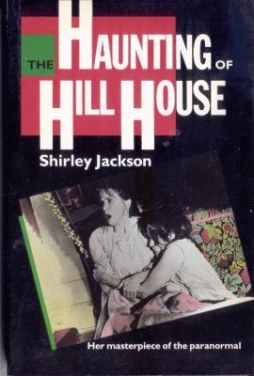 It’s an interesting passage. Firstly, of course, it’s interesting because it seems to be saying something crucial about the nature of fear, what there is to be afraid of, and what the consequences of that fear might be. The others are all afraid of self-knowledge, in one form or another. Eleanor’s afraid of having her self eroded or divided. This seems a significant distinction, and in fact Eleanor articulates what the most frightening part of the book really is: the way we watch her selfhood slide away under the assault of Hill House.
It’s an interesting passage. Firstly, of course, it’s interesting because it seems to be saying something crucial about the nature of fear, what there is to be afraid of, and what the consequences of that fear might be. The others are all afraid of self-knowledge, in one form or another. Eleanor’s afraid of having her self eroded or divided. This seems a significant distinction, and in fact Eleanor articulates what the most frightening part of the book really is: the way we watch her selfhood slide away under the assault of Hill House.
Second, then, and following from that, is that sense of division within Eleanor. Because we empathise with her, because we relate to her as a character, that subversion of her selfhood and loss of her identity is frightening. Perhaps the most frightening moment in the book sees her surrender to the spirit of the house, as this passage precisely foreshadows. And, as well, at the very end, when she is ‘driven’ in quite another way, there’s a terrible moment of clarity — she sees herself acting in a way she cannot control. Surrender is not ultimately an escape. Her fears, established here, become realised.
Thirdly is the distinction between Eleanor and the others. In context, the “smiled fondly” at the end of this section isn’t heartwarming, or foolish, or dismissive, but threatening. The others are treating her as though she’s self-indulgent instead of endangered. It’s easier for them to scapegoat her, however gently, rather than to deal with the threat of the supernatural. This feeds into Eleanor’s own internal sense of division. We increasingly see her act one way to the people around her while thinking and feeling something completely different, and it is strangely frightening.
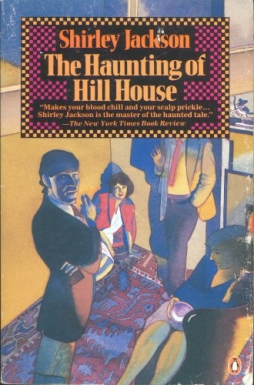 Finally, the stylistic technique by which all these things are brought out is quite powerful. Jackson presents the scene at a remove; it’s a classic example of showing and not telling, and while that ‘rule’ is frequently nonsense in prose, here it works. The tensions between the characters swell because they’re unstated or understated. The distinctions between them are allowed to exist through implication, which means we have to read things into what Jackson tells us, the small points she chooses to highlight; which in turn means we’re more firmly in the position of Eleanor, who notices those small things and is herself finding meaning within them. It’s not just what she sees. It’s how she interprets them. The act of reading the text recreates in us the growing alienation Eleanor feels.
Finally, the stylistic technique by which all these things are brought out is quite powerful. Jackson presents the scene at a remove; it’s a classic example of showing and not telling, and while that ‘rule’ is frequently nonsense in prose, here it works. The tensions between the characters swell because they’re unstated or understated. The distinctions between them are allowed to exist through implication, which means we have to read things into what Jackson tells us, the small points she chooses to highlight; which in turn means we’re more firmly in the position of Eleanor, who notices those small things and is herself finding meaning within them. It’s not just what she sees. It’s how she interprets them. The act of reading the text recreates in us the growing alienation Eleanor feels.
Generally, the book’s careful about what it shows and what it implies. Theodora is typically read as a lesbian, though the nature of her sexuality’s never directly stated. But it seems to shape her relationship with Eleanor — at the first the two are deeply drawn to each other, then become alienated. I think the lack of specificity about her sexuality here mimics Eleanor’s lack of understanding, or at least her lack of a name for her feelings and her understanding of Theodora’s feelings. Eleanor’s introverted and inexperienced with people, so we can understand more than she does, not only about Theodora, but about Luke and the relations between all three of them, at the same time as we see the way her incomprehension heightens the divide between her and the others.
At moments, the book’s oddly reminiscent of Sartre’s No Exit (or in the original French, Huis Clos), a play about a love triangle between a man and two women, with a supernatural setting. But the characters are wildly different, their weaknesses more prominent and interesting. And No Exit sees a conflict of personalities; hell is other people. In Hill House, personality is more fragile, and the horror is that we are not really ourselves. The conscious self is not always in control. Wickedness and foolishness are mixed up, as in a dialogue between Eleanor and Theodora early in the book.
 On the other hand, the arrival, fairly late in the story, of Montague’s wife and her friend, a lowbrow schoolmaster, threatens to ruin the atmosphere. Both characters seem overbroad. Montague himself has always been an amiable, if paternal, figure of fun more than a bold investigator of forbidden secrets. But his wife’s a caricature of an insensitive harridan, and her associate — and possible lover — is a parody of a self-conscious man of action. Their appearance seems at first to clash with the novel’s tone, to cause a falling-off of tension. Again, though, this is Jackson cleverly manipulating the feel of dread. The new arrivals broaden the little society of the house, further marginalising Eleanor, who becomes more inward, more prey to the supernatural influence, as a result. The arrogance of Mrs. Montague pushes Eleanor over the edge, and you don’t see it coming. It’s very like a roller-coaster ride. The dread of the strange house mounts. Then Mrs. Montague arrives and things lighten, becoming weightless. Then her fatuousness leads to worse moments, Eleanor turns away from people further, and things don’t so much rocket downhill as fall off a cliff.
On the other hand, the arrival, fairly late in the story, of Montague’s wife and her friend, a lowbrow schoolmaster, threatens to ruin the atmosphere. Both characters seem overbroad. Montague himself has always been an amiable, if paternal, figure of fun more than a bold investigator of forbidden secrets. But his wife’s a caricature of an insensitive harridan, and her associate — and possible lover — is a parody of a self-conscious man of action. Their appearance seems at first to clash with the novel’s tone, to cause a falling-off of tension. Again, though, this is Jackson cleverly manipulating the feel of dread. The new arrivals broaden the little society of the house, further marginalising Eleanor, who becomes more inward, more prey to the supernatural influence, as a result. The arrogance of Mrs. Montague pushes Eleanor over the edge, and you don’t see it coming. It’s very like a roller-coaster ride. The dread of the strange house mounts. Then Mrs. Montague arrives and things lighten, becoming weightless. Then her fatuousness leads to worse moments, Eleanor turns away from people further, and things don’t so much rocket downhill as fall off a cliff.
So with all that said: what is the real source of fear in the book? What is the emotional truth that makes the book work as a horror story? What is there to be afraid of?
I think the book fuses new and old fears in a remarkable way. It clearly engages with a Gothic tradition of aging houses and emperiled females, but revises the tradition at the same time. Eleanor’s not young, though arguably she is an innocent. There’s no threatening male; the older paternal man is a figure almost of fun, while the young potential lover who ‘rescues’ Eleanor from a moment of danger near the end is mostly irrelevant. Broadly, the book is more concerned with Eleanor’s relations with other women — her mother, her sister, Theodora, the Crain ghost. Mrs Montague’s self-assuredness, and the fact that Luke Sanderson’s only present at the insistence of his aunt, tends to emphasise the primacy of females to the story and the society it describes.
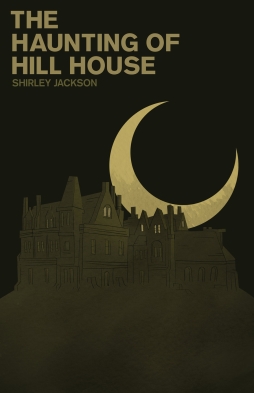 But in terms of the actual fear at the centre of the story, I think the book updates a classic fear in a remarkable way. It seems to me that the real horror in much classic horror writing is not in the death or dismemberment of the main characters. Often it seems to lie in the slow death, in some way, of hope. Often that’s accompanied by an increase in the protagonist’s isolation, and accordingly an increase in powerlessness (or realisation of isolation and powerlessness).
But in terms of the actual fear at the centre of the story, I think the book updates a classic fear in a remarkable way. It seems to me that the real horror in much classic horror writing is not in the death or dismemberment of the main characters. Often it seems to lie in the slow death, in some way, of hope. Often that’s accompanied by an increase in the protagonist’s isolation, and accordingly an increase in powerlessness (or realisation of isolation and powerlessness).
So: Macbeth moves further and further along what Kurosawa called the path of demons and further into the clutches of prophecy, more removed from the people around him as his political power increases and he drives away his former allies, but is unable to break away from his predicted future. Victor Frankenstein’s attempt at the blasphemous creation of life results in the death of his family, the murder of his bride on his wedding night, and ultimately his own exile into the far frozen north; he is increasingly isolated from the society of well-meaning but ignorant people around him, as he knows the secret behind his brother’s death and his best friend’s death but cannot tell anyone. From a kind of creator-god, he dwindles to a ruined man in the arctic. Like Macbeth, he hits his high point early.
If you fall victim to Dracula, you don’t just die, you’re recreated in his own image, conscienceless and bloodthirsty, an image of blasphemy and of one’s isolation from God, unable to walk in the sun. If you find yourself in an H.P. Lovecraft story, you don’t die without first going mad — as it is gradually revealed to you that you live in a godless and inhuman cosmos, an insignificant speck next to elder powers you can’t even understand, living in a society that’s replaying an endless saga of degeneration and entropy. And if you find yourself in a traditional Gothic story, you struggle to maintain your own mental and physical integrity against the assault of a house, its owner, and a society that thinks you’re effectively the property of another person.
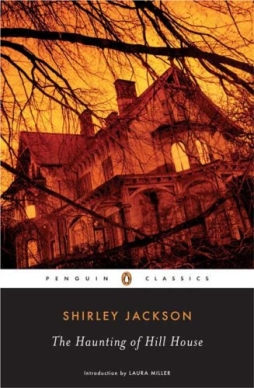 The Haunting of Hill House seems to draw from all these things. Sometimes that’s notable by omission: for all the talk of ghosts and the afterlife, there’s almost no mention of God or religion in the book. Montague and his wife are trying to desacralise the afterlife, to explain it scientifically, to communicate with it, but also to control it. Only a description of a primer Henry Crain created for his daughter seems to have any significant reference to the divine in this book, and that’s largely negative — a list of sins to avoid.
The Haunting of Hill House seems to draw from all these things. Sometimes that’s notable by omission: for all the talk of ghosts and the afterlife, there’s almost no mention of God or religion in the book. Montague and his wife are trying to desacralise the afterlife, to explain it scientifically, to communicate with it, but also to control it. Only a description of a primer Henry Crain created for his daughter seems to have any significant reference to the divine in this book, and that’s largely negative — a list of sins to avoid.
On the other hand, Jackson’s found a contemporary equivalent of damnation: mental instability. Not the fear of other people suffering mental illness, but the fear of losing one’s own sanity. Of having one’s own personality destabilised and being ‘recreated’ as something one does not recognise, as horrific as returning from the grave as a vengeful ghost. Look at how often the word ‘crazy’ recurs in the text of the book. Eleanor’s destabilisation is caused by a supernatural force, but the point is that this is how she’s attacked, not through physical intimidation. Like Frankenstein, or Macbeth, or Faustus, she begins her story on a high — revelling in the freedom she gets from stealing her sister’s car, enjoying the active exercise of imagination — and then watches that slowly be chipped away, as she slides into the power of an external force that re-creates her in its own chosen way.
Ultimately, and what is most terrifying, Eleanor consents to this and even briefly enjoys it. The spirit of the house works to isolate her from the others, to show her that they will betray her, to present itself as her only salvation. There is an element of truth in this. The others in the house do turn against Eleanor, in greater or lesser ways. They do marginalise her. They do minimise her needs for the sake of their own wants. And we, knowing people, understand why it is convenient for them to do this, even if the sheltered Eleanor cannot. Part of the horror perhaps is just this: that this is what people really are.
So Eleanor, isolated and powerless, gives in to the temptation of the spirit of Hill House. The result destroys her. The spirit has her crash her car into a huge tree on the grounds, where another guest of the house had been killed eighteen years before. Eleanor has a last terrible moment of clarity:
In the unending, crashing second before the car hurled into the tree she thought clearly, Why am I doing this? Why am I doing this? Why don’t they stop me?
She has lost all control, even over herself; and, terribly, realises how much she’s lost. It’s a bitter inversion of the opening of her story. The car that gave her freedom becomes the vehicle of her death. The second that she complained of earlier, going on and on, becomes unending because of her surrender. And she is alone: there is no one to stop her, no one to save her.
So the book revises old fears; it finds new expressions for them. It is profound and empathic. It’s also stunningly written; there are intricate patterns of imagery (look at how often references to babies, nurseries, and infants recur). It is a skillful book that says something about what we are afraid of, and, in showing one woman’s increasing isolation, implicates all of us as both persecutors and victims. It finds fear proper to its times, and which echo on, perhaps, into ours.
Matthew David Surridge is the author of “The Word of Azrael,” from Black Gate 14. His ongoing web serial is The Fell Gard Codices. You can find him on facebook, or follow his Twitter account, Fell_Gard.
wow! Great article. I think that HHH is one of the best “less is more” horror stories that I’ve ever read. I first read it when I was 12 and even back then it had me thinking about what was actualy happening in the storie.
Doug
Sorry, I can’t type well at 6.30 A.M.
[…] to the fears and hopes that bubble up in stories of the supernatural (for more on which see Matthew David Surridge’s recent post on Shirley Jackson’s classic tale of psychological horror, The Haunting of Hill […]
Good rumination on what makes HHH work after all these years, and I’m so glad to see my favorite horror novel covered here on BLACK GATE.
Following the link you provided, I read Joe Nazare’s analysis. Nazare’s research is thorough, and he provides a compelling argument for the ghost of the Crain daughter being the source of the haunting. It is a valid reading.
That said, I still think Jackson left the haunting ambiguous enough to leave room for different interpretations, and my preferred reading puts me in the camp of “others [who] have thought the malevolence was simply a kind of emergent property of the place and the building.” Granted, I have a weakness for the “Bad Place” motif; incidentally, it is this understanding of Hill House that has given so much fuel to Stephen King’s imagination over the years (e.g. THE SHINING, ROSE RED, “1408).
Understand, though, that the idea of Hill House being “born bad” does not preclude other interpretations of the haunting: it can, in fact, accommodate them. The house can be its own possessing, malevolent force and also have trapped or fed on a specific personality, say, Sophia Crain. And the “Eleanor’s telekinesis” interpretation, while I have never bought it as being the sole or primary source of the manifestations, fits in intriguingly with the concept of her acting as a sort of battery, supercharging the house (an idea King made explicit in his mini-series ROSE RED).
Anyway, the possible and conflicting interpretations certainly make it a fun book to teach, and I included it in the readings for my HORROR IN LITERATURE class a few years back. Thanks for the chance to discuss it again!
[…] I took a look at Shirley Jackson’s The Haunting of Hill House the other week, I did not know that February was […]
[…] try Jackson’s other Gothic tale, The Haunting of Hill House (masterfully discussed here by Matthew David Surridge). Neither book will let you […]